8 Popular Japanese Coffee Drinks You Need to Try
Last updated on July 22nd, 2025 at 02:10 pm
A few months ago, I was watching a video about the tiny Japanese cafés and their best coffee, and I got intrigued.
Not just by the aesthetics, but by the drinks themselves. Some looked like desserts. Others had ingredients I’d never think to mix with coffee (sweet red beans? yuzu?).
The problem? I couldn’t find a solid guide that broke everything down clearly for someone who wanted to try these at home or understand what to order next time they visited a Japanese café.
So guess what? I made one!
In this guide, I’ll walk you through 9 popular Japanese coffee drinks. From layered matcha lattes to fizzy cold brew tonics. You’ll learn what each one is, how it’s served, and how to make it yourself with easy ingredients. So let’s start brewing!
8 Unique Japanese Coffee Drinks
If you’re curious about popular Vietnamese coffee drinks too, check out this guide. Anyway, ready to explore Japan’s most creative coffee combos? So, let’s check some exotic coffee drinks that you probably never heard about:
1 – Coffee Jelly (コーヒーゼリー – Kōhī Zerī)
In Japan, coffee jelly is one of those nostalgic, summer café treats that feels like a dessert but still lets you enjoy the bold flavor of coffee.
It’s jiggly, lightly sweet, and has this mellow bitterness that pairs so well with whipped cream or a splash of milk. You’ll find it in everything from convenience stores to fancy dessert drinks in cafés.
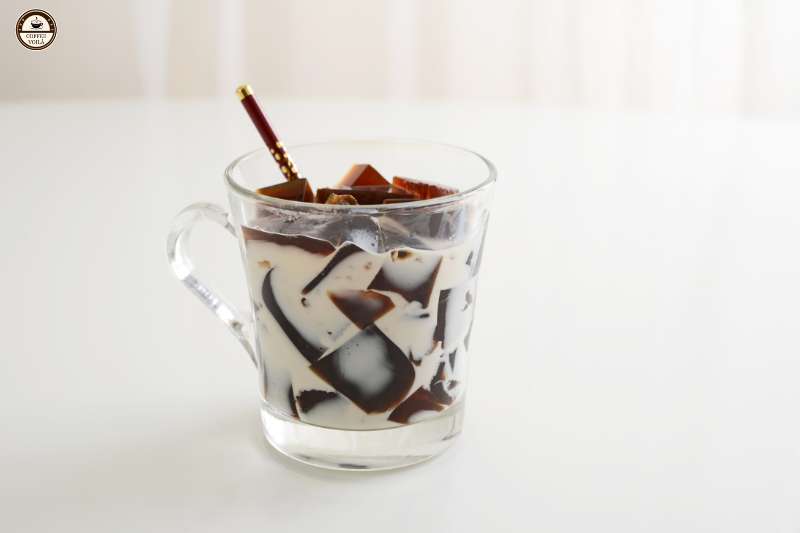
Also, making it at home is easy. The base is strong black coffee mixed with gelatin and a little sugar. Once it sets, you cut it into cubes and drop them into a glass.
From there, you can top it with sweetened whipped cream, a drizzle of milk, or even float it in a coffee drink like a frappé.
Usually, it’s served in a glass cup or dessert bowl so you can see the layers. Sometimes cafés will add a mint leaf or serve it with a long spoon and straw combo especially if it’s in a drink.
Ingredients:
- 1½ cups (360 ml) strong brewed coffee (hot)
- 1 tablespoon sugar (adjust to taste)
- 1 tablespoon gelatin powder (or 1½ tsp agar for vegan version)
- Optional: ¼ cup milk or whipped cream for topping
Method:
- In a small bowl, sprinkle gelatin over 2 tablespoons of cold water and let it bloom for 5 minutes.
- Stir the sugar into the hot coffee until dissolved, then mix in the bloomed gelatin until fully melted.
- Pour the mixture into a shallow dish or mold and refrigerate for 2–3 hours, or until set.
- Cut into cubes and serve with whipped cream, milk, or layered into a fancy iced coffee.
Tip: Use a medium or dark roast for a deeper flavor. I’m a fan of using Lifeboost Coffee for this. You can also experiment with sweeteners like honey or maple syrup for a twist.
2 – Japanese Iced Coffee (アイスコーヒー – Aisu Kōhī)
I didn’t expect much, but Japanese iced coffee won me over. I used to brew hot coffee and toss it in the fridge. I thought I was being clever until I discovered this flash-chill method. You get a bold, crisp, and aromatic coffee.
Unlike cold brew, Japanese iced coffee is brewed hot directly over ice. That sudden chill locks in the coffee’s brightness and keeps those complex flavors intact.
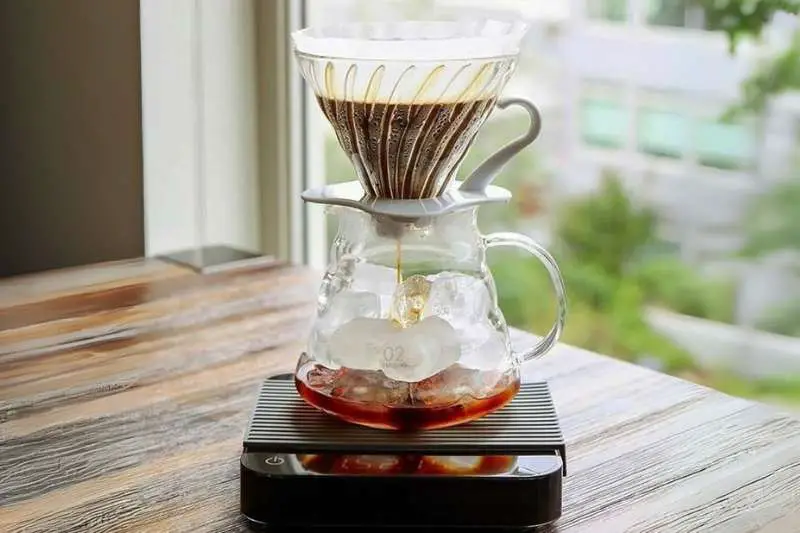
It’s a favorite in Japanese kissaten (traditional cafés) and third-wave shops alike especially in the sticky summer months.
Usually, this drink is served in a tall glass filled to the top with ice, sometimes with a slice of lemon for a citrusy twist. No cream or sugar unless you really want it. I prefer mine black so I can taste the notes of the bean. For this, I like Lifeboost Coffee’s dark roast, which works beautifully.
Ingredients
- 30g medium-ground coffee (about 2 tablespoons)
- 250ml hot water (just off the boil)
- 100g ice cubes (placed in carafe or glass)
Method
- Place the ice in a heatproof carafe or server.
- Brew coffee using a pour-over method (like a Hario V60), pouring slowly over the grounds in a spiral motion.
- Let the hot coffee drip directly onto the ice—it’ll melt slightly, chilling the brew fast.
- Serve immediately over fresh ice. Optional: add a lemon wedge or drink it straight.
Notes: It’s one of the cleanest and most refreshing ways to enjoy coffee. Once you nailed the ratio, you never go back to fridge coffee again.
3 – Canned Coffee (缶コーヒー – Kan Kōhī)
Canned coffee is a major part of Japanese coffee culture. You’ll find it in vending machines, convenience stores, and supermarkets; it’s available both hot and cold, depending on the season.
You’ll see popular brands like Boss, Georgia, Wonda, and UCC lining the shelves.
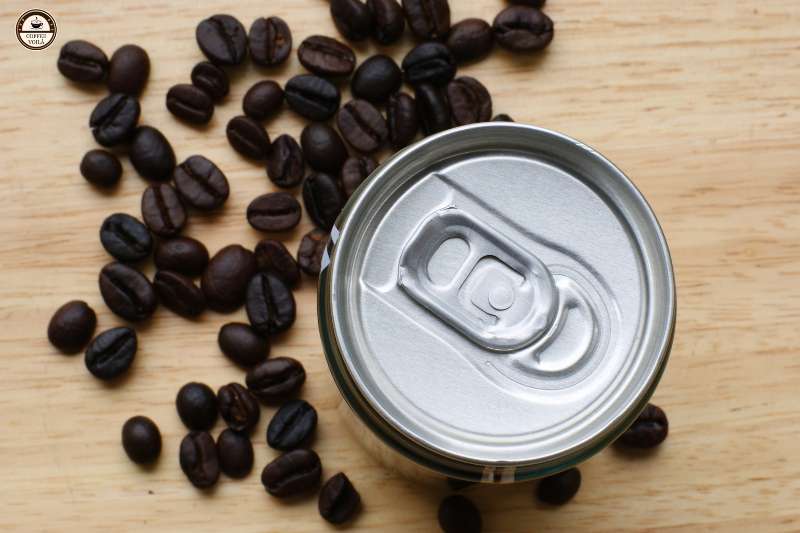
Also, there are sweet, milky options, black unsweetened versions, and even flavored varieties with vanilla or espresso blends. Many are made with flash-brewed coffee and milk, sweetened with sugar or condensed milk.
The texture is smooth, and the flavor ranges from creamy and dessert-like to bold and roasty.
While most people don’t make canned coffee at home, you can recreate something similar.
For this, combine 6 oz (180 ml) of strong brewed coffee or cold brew with 2–3 tbsp sweetened condensed milk or cream. Afterward, chill and store it in a bottle, or pour over ice.
Serving Tip:
For the full experience, drink it cold from the can or serve in a chilled glass bottle. And you don’t need to garnish.
4 – Espresso Shake (エスプレッソシェイク)
If you’ve ever craved a milkshake but didn’t want to skip your daily espresso, the Japanese espresso shake is the perfect middle ground.
This drink is creamy, cold, and full of rich coffee flavor. In other words, it’s like dessert and caffeine all in one. You’ll find this on the menu at chains like Doutor and in trendy Tokyo cafés. However, it’s super easy to recreate at home.
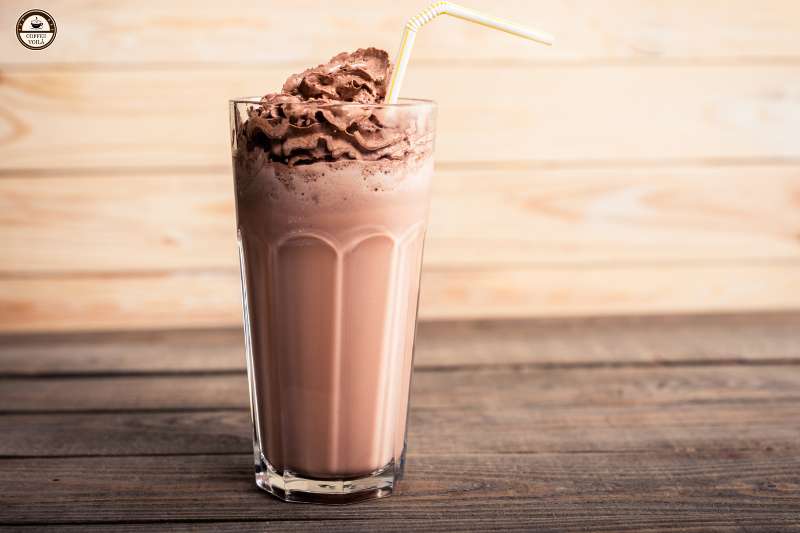
This drink combines strong espresso with vanilla soft serve or ice cream, then blends it into a thick and frothy shake. The sweetness balances out the espresso’s bitterness, giving it a smooth, bold, and creamy texture.
Some cafés top it with whipped cream or cocoa powder, but honestly, it’s great as-is.
Ingredients:
- 1 shot (1 oz / 30 ml) freshly brewed espresso
- 2 large scoops vanilla ice cream or soft serve
- 1–2 tbsp milk (to thin slightly, optional)
- Optional toppings: whipped cream, chocolate syrup, or crushed coffee beans
How to Make It:
- Brew your espresso and let it cool slightly so it doesn’t melt the ice cream instantly.
- In a blender, combine the espresso, vanilla ice cream, and a splash of milk if needed.
- Blend until smooth and thick—don’t overdo it or it’ll turn runny.
- Pour into a chilled glass and add toppings if you’re feeling extra.
Pro tip: Use a dark roast espresso or Japanese-style coffee for a deeper flavor punch. I like using Volcanica’s Espresso Dark Roast because it’s bold, smooth, and works well with vanilla ice cream.
5 – Uji Matcha Coffee Latte
The Uji Matcha Coffee Latte is a beautifully balanced combo of green tea and coffee. It’s a favorite in cafés across Kyoto and trendy Tokyo spots, especially during the cooler months.
The flavor is rich but not overpowering: grassy from the matcha, slightly bitter from the coffee, and creamy from the milk.
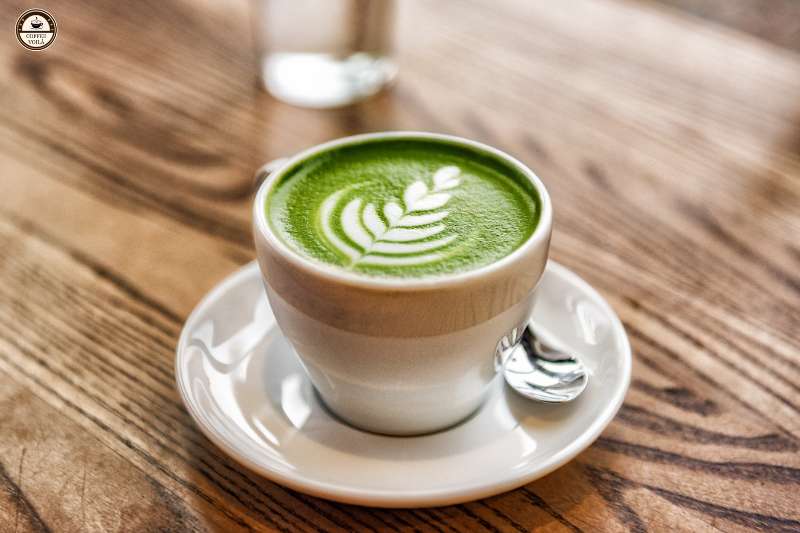
You can enjoy it hot or iced, but it’s particularly nice layered in a clear glass so you can see the green, white, and brown stripes before you stir.
Some cafés even sprinkle matcha powder or add whipped cream on top if you’re going for a little extra flair.
Ingredients
- 1 tsp Uji matcha powder (ceremonial or latte grade)
- 2 oz hot water (about 80°C or 176°F)
- 1 shot (1 oz) of espresso
- 6 oz steamed milk or plant-based alternative
- Sweetener to taste (optional – honey, syrup, or vanilla)
Method
- Whisk the matcha with hot water using a bamboo whisk until smooth and frothy.
- Brew a single shot of espresso using your preferred method.
- Steam the milk until warm and slightly foamy.
- Pour the matcha into a glass, then gently add the steamed milk, and finally the espresso shot over the top for a layered effect.
Tip: Use high-quality Uji matcha. For instance, brands like Ippodo or Matcha.com make a difference in both flavor and color.
6 – Cold Brew Tonic with Yuzu
Cold brew tonic with yuzu is a surprisingly delicious drink. The tart citrus from the yuzu cuts through the smooth bitterness of the coffee. Meanwhile, the tonic water brings this light, fizzy finish that feels perfect for warm afternoons or slow weekends.

It’s popular in Tokyo’s third-wave cafés, especially among people who love coffee but want something a little more adventurous and refreshing.
The drink is typically built in layers: cold brew first, then tonic, then a splash of yuzu juice or syrup.
You’ll usually find it in a tall, clear glass with a big ice cube and maybe a sprig of rosemary or a citrus peel if they’re feeling fancy. It’s definitely more of a sipper than a chugger.
Ingredients:
- 100 ml cold brew concentrate
- 120 ml chilled tonic water
- 1 tbsp yuzu juice or 2 tsp yuzu syrup
- Ice (large cube preferred)
- Optional: citrus peel or rosemary sprig for garnish
Method:
- Fill a tall glass with a large ice cube.
- Pour in the cold brew concentrate.
- Slowly top with tonic water to keep the bubbles.
- Add yuzu juice or syrup last and give it a gentle stir. Garnish if desired.
Notes: It’s fizzy, citrusy, and bitter enough to wake up your palate without hitting too hard.
7 – Hōjicha Coffee Latte
Hōjicha coffee latte is made with roasted green tea (hōjicha) and coffee. This drink brings together two very different worlds: one earthy and tea-forward, the other rich and caffeinated.
The roasted notes from the hōjicha give it a toasty flavor, and it pairs beautifully with milk or a light splash of cream.
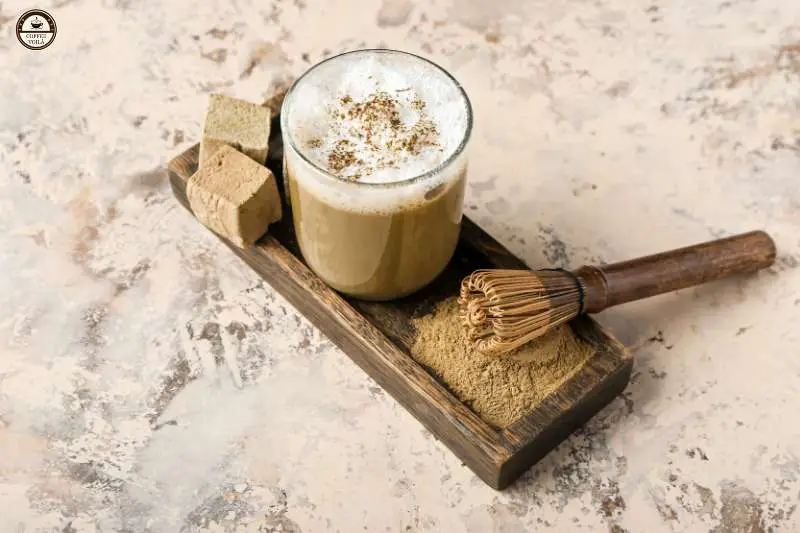
You’ll commonly find this served hot in a wide ceramic cup or glass mug. Sometimes topped with a dusting of hōjicha powder or a drizzle of syrup.
Also, iced versions work as well in the warmer months and have a smoother, almost caramel-like finish when chilled.
Ingredients:
- 1 tsp hōjicha powder (or 150 ml brewed hōjicha tea)
- 60 ml strong brewed coffee or a single espresso shot
- 150 ml steamed milk (or oat milk)
- Optional: 1–2 tsp simple syrup or honey
Method:
- Brew your hōjicha or whisk the powder with a splash of hot water until smooth.
- Pour in the coffee and stir gently.
- Steam and froth your milk, then add it to the cup.
- Sweeten to taste and top with extra hōjicha powder if you’re feeling fancy.
Notes: This one’s great when you want a latte that’s lower in caffeine but still full of depth and flavor.
You can find good-quality hōjicha powder online from Japanese tea brands like Yunomi or Ippodo, or check your local Asian grocery store in the tea aisle. Just make sure it’s finely ground for lattes, not loose leaf, so it blends smoothly into milk.
8 – Viennese-Style Japanese Coffee (with Whipped Cream)
This coffee is inspired by the rich culture of Austrian cafés. But often served in Japanese kissaten, it balances strong brewed coffee with a generous layer of cold whipped cream on top.
You also don’t need to add milk. Instead, you sip through the cream for that buttery contrast against the bitter brew.
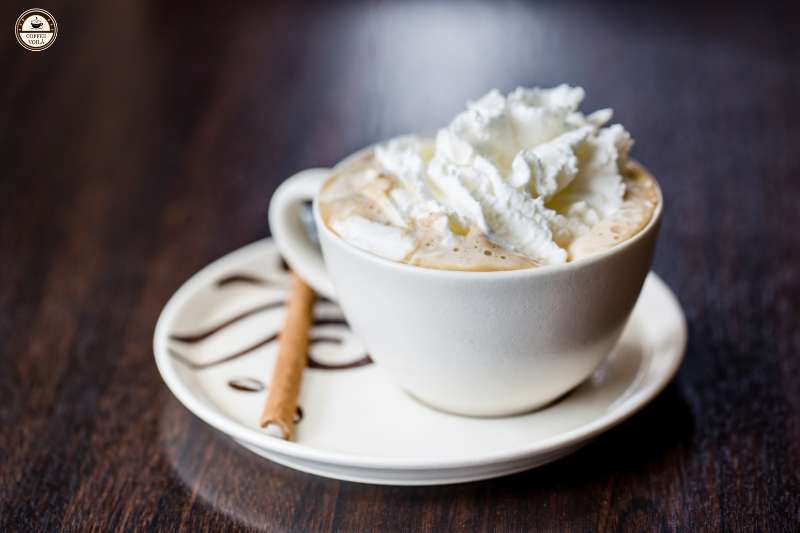
You’ll often see this served in a clear, heatproof glass so the dark coffee and pale cream are fully on display. It’s best enjoyed without stirring and simply letting the cream slowly melt as you sip.
If you like, try topping it with a dusting of cocoa powder or some dark chocolate shavings for a little extra flair.
Ingredients
- 5 oz (150 ml) strong brewed coffee or 2 shots of espresso
- 2 tbsp cold heavy cream
- 1 tsp powdered sugar (optional, for sweetening the cream)
- Pinch of cocoa powder or shaved chocolate (optional)
Method
- Brew your coffee and pour it into a warm glass mug or tempered glass.
- Whip the cold cream and sugar together until soft peaks form—don’t over-whip.
- Gently spoon the cream onto the coffee, letting it float on top.
- Dust with cocoa powder or shaved chocolate and serve immediately, without stirring.
Last Thoughts
Have you tried any of these Japanese coffee drinks? I’d love to hear what you thought, whether one surprised you or became a new favorite.
If there’s another Japanese coffee drink I didn’t include (maybe something like Coffee Jelly Float, Kyoto-style slow drip, or even canned Boss Coffee you swear by), drop it in the comments. And with that… voilà!
Questions? We Have Answers.
Get answers to a list of the most Frequently Asked Questions.

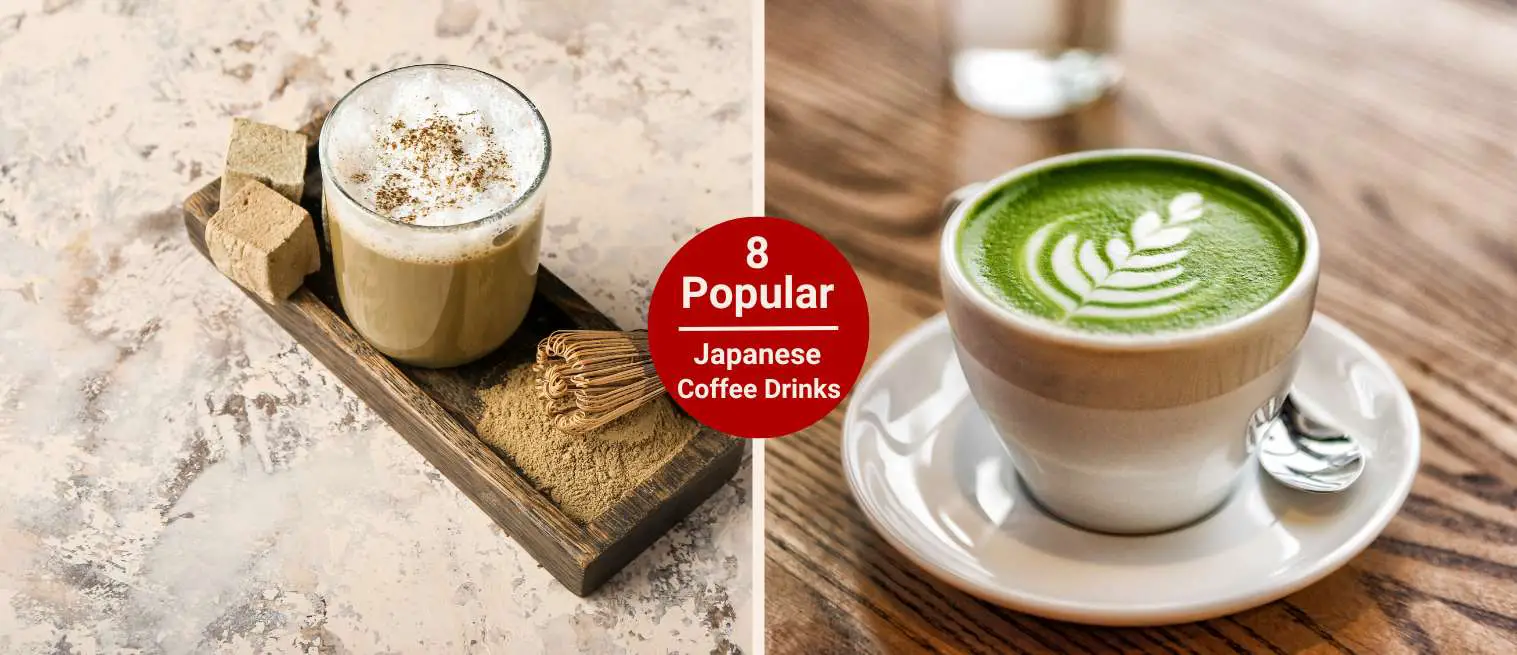






The text is in English, so the response will be in English.
Japanese coffee culture seems incredibly diverse and innovative, blending tradition with modern creativity. The variety of ingredients and presentation styles mentioned are fascinating, making each coffee experience unique. It’s interesting how these drinks cater to different tastes, from sweet and dessert-like to bold and refreshing. The accessibility of canned coffee also highlights its integral role in daily life. Would you recommend trying any of these coffee styles as a first introduction to Japanese café culture?
Yes, I enjoy a matcha latte. If you want a coffee spin, try a dirty matcha latte. It combines one or two shots of espresso with milk and matcha.